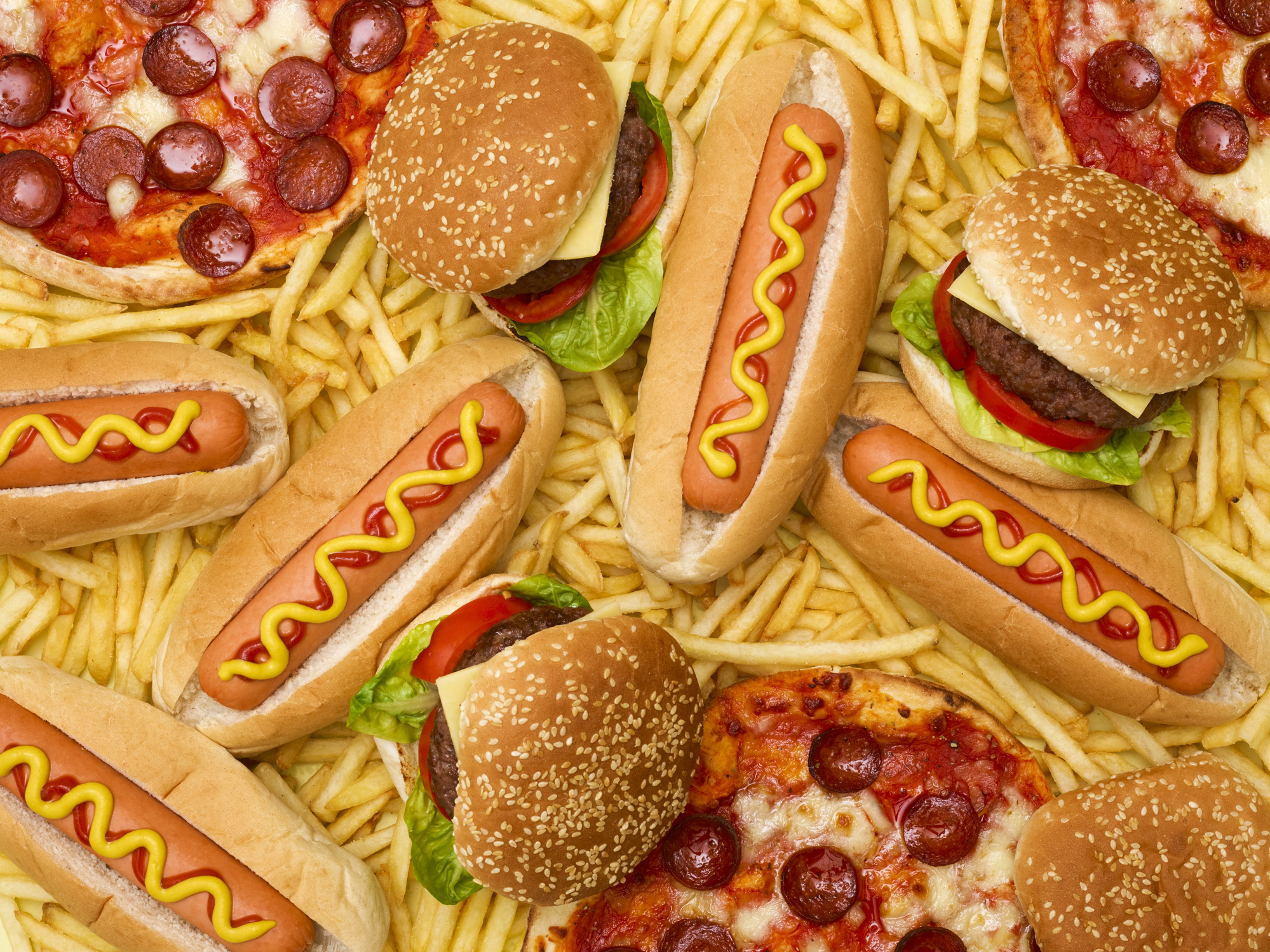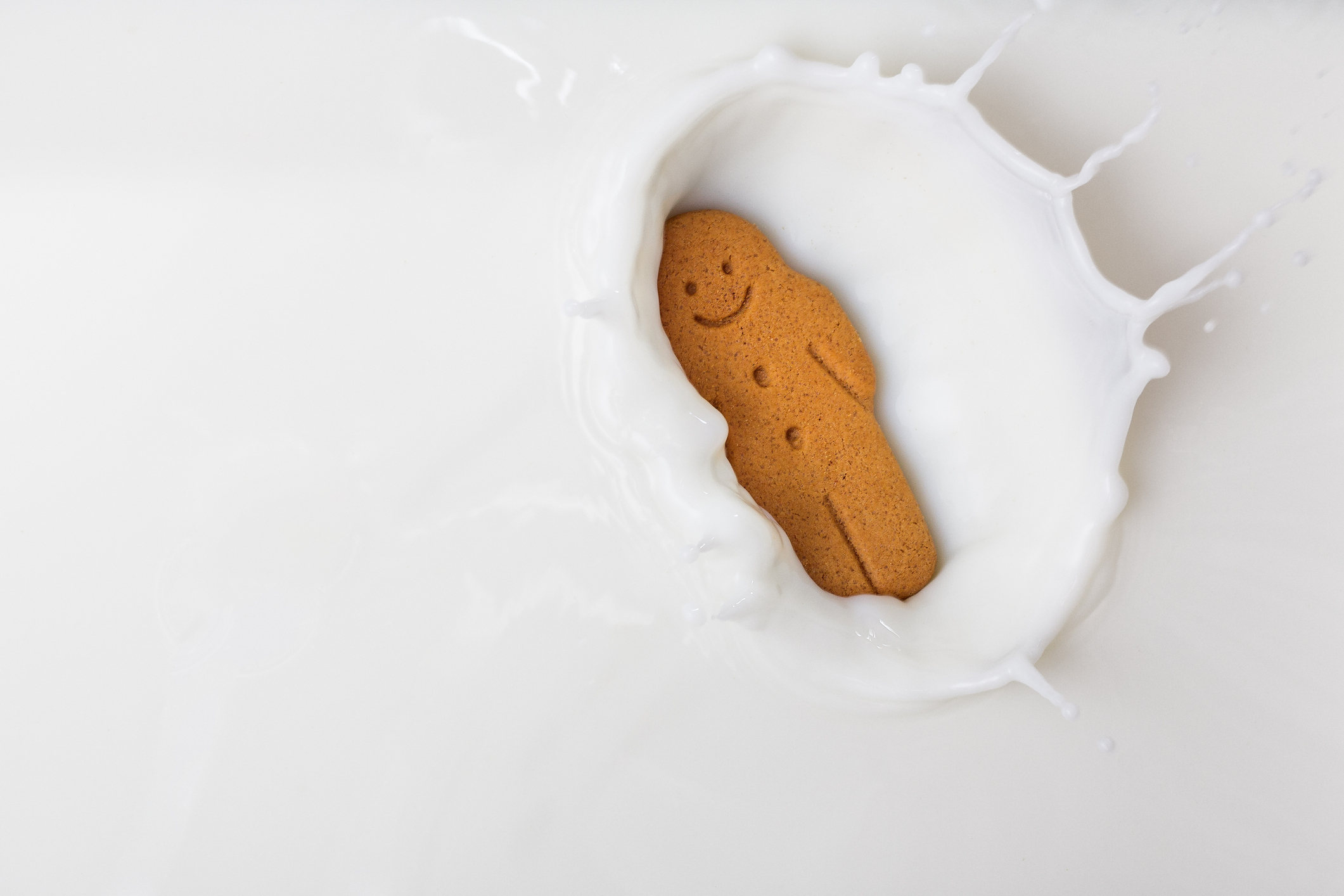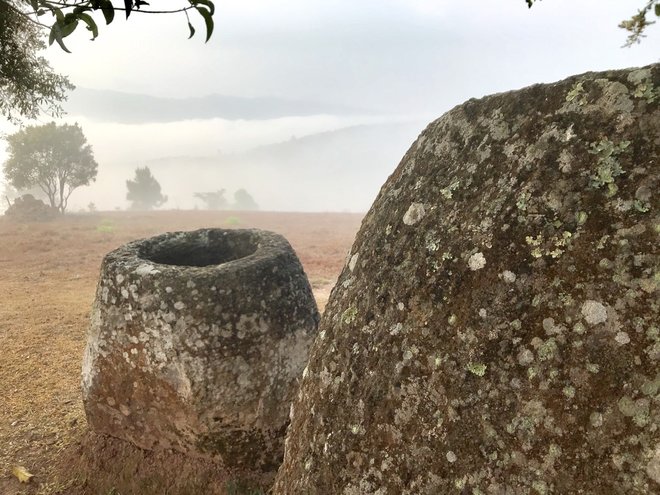Ellen DeGeneres Opens Up About Being Sexually Assaulted as a Teenager
Article via CheatSheet
Ellen DeGeneres has been on our television screens for almost two decades. She’s always been very open with her viewers about the things that she has gone through. So much so, that you may have thought that you knew everything there was to know about DeGeneres.
But on season two of Netflix’s My Next Guest Needs No Introduction with David Letterman, DeGeneres opened up about a very intimate topic. Her sexual assault.
What happened to DeGeneres?
On the show, DeGeneres talked about a man that her mother, Betty, married. Soon after the wedding, Betty was diagnosed with breast cancer and had to have one of her breasts removed.
“He told me when she was out of town that he’d felt a lump in her breast and needed to feel my breasts because he didn’t want to upset her, but he needed to feel mine,” DeGeneres said. “Again, ’cause I didn’t know about bodies, I don’t know that breasts are all different and… Anyway, he convinced me that he needs to feel my breasts and then he tries to do it again another time, and then another time.”
The situation escalated until DeGeneres felt that she needed to get out.
“He tries to break my door down, and I kicked the window out and ran ’cause I knew it was going to go more to something… and I didn’t want to tell my mother ’cause I was protecting her and I knew that would ruin her happiness.”
Though the incident was hard for DeGeneres to recount, she felt that it was important for her to do so.
“I’m angry at myself because, you know, I didn’t — I was too weak to stand up to — I was 15 or 16,” she told Letterman. “It’s a really horrible, horrible story and the only reason I’m actually going to go into detail about it is because I want other girls to not ever let someone do that.”
Does DeGeneres still talk to her mom?
DeGeneres did eventually tell her mother what happened. But by that time, Betty didn’t believe her.
“I should never have protected her,” DeGeneres said. “I should have protected myself and I didn’t tell her for a few years and then I told her. And then she didn’t believe me and then she stayed with him for 18 more years. And finally left him because he’d changed the story so many times.”
DeGeneres and her mother have a better relationship now, but she still wishes that her mom had done more for her when she was growing up.
“I always have taken care of her my whole life,” the comedian said of her mom. “So I just kept taking care of her. I didn’t really let it get to me. Until recently, I kind of went, ‘I wish I would have been better taken care of. I wish she would have believed me.’ And she’s apologetic, but, you know…”
Why is DeGeneres opening up now?
DeGeneres is sharing her story now in order to encourage girls who go through similar things to speak up.
“We [women] just don’t feel like we’re worthy, or we’re scared to have a voice, and we’re scared to say no,” she said. “That’s the only reason I think it’s important to talk about it because there’s so many young girls and it doesn’t matter how old you are. When I see people speaking out, especially now, it angers me when victims aren’t believed, because we just don’t make stuff up. And I like men, but there are so many men that get away with so much.”
Samsung deepfake AI could fabricate a video of you from a single profile pic
Article via CNET
Imagine someone creating a deepfake video of you simply by stealing your Facebook profile pic. The bad guys don’t have their hands on that tech yet, but Samsung has figured out how to make it happen.
Software for creating deepfakes — fabricated clips that make people appear to do or say things they never did — usually requires big data sets of images in order to create a realistic forgery. Now Samsung has developed a new artificial intelligence system that can generate a fake clip by feeding it as little as one photo.
The technology, of course, can be used for fun, like bringing a classic portrait to life. The Mona Lisa, which exists solely as a single still image, is animated in three different clips to demonstrate the new technology. A Samsung artificial intelligence lab in Russia developed the technology, which was detailed in a paper earlier this week.
Here’s the downside: These kinds of techniques and their rapid development also create risks of misinformation, election tampering and fraud, according to Hany Farid, a Dartmouth researcher who specializes in media forensics to root out deepfakes.
When even a crudely doctored video of US Speaker of the House Nancy Pelosi can go viral on social media, deepfakes raise worries that their sophistication would make mass deception easier, since deepfakes are harder to debunk.
“Following the trend of the past year, this and related techniques require less and less data and are generating more and more sophisticated and compelling content,” Farid said. Even though Samsung’s process can create visual glitches, “these results are another step in the evolution of techniques … leading to the creation of multimedia content that will eventually be indistinguishable from the real thing.”
Like Photoshop for video on steroids, deepfake software produces forgeries by using machine learning to convincingly fabricate a moving, speaking human. Though computer manipulation of video has existed for decades, deepfake systems have made doctored clips not only easier to create but also harder to detect. Think of them as photo-realistic digital puppets.
Lots of deepfakes, like the one animating the Mona Lisa, are harmless fun. The technology has made possible an entire genre of memes, including one in which Nicolas Cage‘s face is placed into movies and TV shows he wasn’t in. But deepfake technology can also be insidious, such as when it’s used to graft an unsuspecting person’s face into explicit adult movies, a technique sometimes used in revenge porn.
In its paper, Samsung’s AI lab dubbed its creations “realistic neural talking heads.” The term “talking heads” refers to the genre of video the system can create; it’s similar to those video boxes of pundits you see on TV news. The word “neural” is a nod to neural networks, a type of machine learning that mimics the human brain.
The researchers saw their breakthrough being used in a host of applications, including video games, film and TV. “Such ability has practical applications for telepresence, including videoconferencing and multi-player games, as well as special effects industry,” they wrote.
The paper was accompanied by a video showing off the team’s creations, which also happened to be scored with a disconcertingly chill-vibes soundtrack.
Usually, a synthesized talking head requires you to train an artificial intelligence system on a large data set of images of a single person. Because so many photos of an individual were needed, deepfake targets have usually been public figures, such as celebrities and politicians.
The Samsung system uses a trick that seems inspired by Alexander Graham Bell’s famous quote about preparation being the key to success. The system starts with a lengthy “meta-learning stage” in which it watches lots of videos to learn how human faces move. It then applies what it’s learned to a single still or a small handful of pics to produce a reasonably realistic video clip.
Unlike a true deepfake video, the results from a single or small number of images end up fudging fine details. For example, a fake of Marilyn Monroe in the Samsung lab’s demo video missed the icon’s famous mole. It also means the synthesized videos tend to retain some semblance of whoever played the role of the digital puppet, according to Siwei Lyu, a computer science professor at the University at Albany in New York who specializes in media forensics and machine learning. That’s why each of the moving Mona Lisa faces looks like a slightly different person.
Generally, a deepfake system aims at eliminating those visual hiccups. That requires meaningful amounts of training data for both the input video and the target person.
The few-shot or one-shot aspect of this approach is useful, Lyu said, because it means a large network can be trained on a large number of videos, which is the part that takes a long time. This kind of system can then quickly adapt to a new target person using only a few images without extensive retraining, he said. “This saves time in concept and makes the model generalizable.”
The rapid advancement of artificial intelligence means that any time a researcher shares a breakthrough in deepfake creation, bad actors can begin scraping together their own jury-rigged tools to mimic it. Samsung’s techniques are likely to find their way into more people’s hands before long.
The glitches in the fake videos made with Samsung’s new approach may be clear and obvious. But they’ll be cold comfort to anybody who ends up in a deepfake generated from that one smiling photo posted to Facebook.
Former U.S. Marine is charged with spying in Russia
(DailYMail) Paul Whelan is charged with spying in Russia after he was arrested in Moscow on December 28 amid allegations he procured a memory stick with a secret list of Russian agents. The Dual US-UK national insists he was not spying and was in Moscow for a wedding. He appeared in court today and said there was ‘nothing legitimate’ about arrest before accusing investigators of making threats to his life and being abusive. Whelan also asked to send a message to Donald Trump but was told to stay silent. The US embassy said it was extremely concerned.
NASA wants you to get your boarding pass to Mars
You probably won’t visit Mars for a long time, if ever. You might have a way to go in spirit, though. NASA has introduced a “Send Your Name” campaign that will put your name on the Mars 2020 rover, leaving a long-term record of your name on the Red Planet. It won’t be easy to read — JPL is using an electron beam to etch over a million names on a dime-sized chip — but you will get a “boarding pass” to prove that your name is Mars-bound.
The option is available to virtually anyone in the world and doesn’t require more sensitive info than your email address. NASA cautions that your inclusion is “subject to review,” so pranksters and spammers aren’t guaranteed to get their names on the rover. You have until September 30th to participate.
NASA isn’t shy about the motivations here: it’s drumming up hype for its extraterrestrial missions, whether it’s Mars exploration or its ambitious plan to return astronauts to the Moon. Regardless, it’s hard not to get a little bit excited knowing that you’ll have some kind of presence on Mars, even if it’s purely symbolic.
Article via ENGADGET
Thousands of cancer diagnoses tied to a poor diet, study finds
Article via CNN
Your diet may have more impact on your cancer risk than you might think, a new study has found.An estimated 80,110 new cancer cases among adults 20 and older in the United States in 2015 were attributable simply to eating a poor diet, according to the study, published in the JNCI Cancer Spectrum on Wednesday.
“This is equivalent to about 5.2% of all invasive cancer cases newly diagnosed among US adults in 2015,” said Dr. Fang Fang Zhang, a nutrition and cancer epidemiologist at Tufts University in Boston, who was first author of the study.
“This proportion is comparable to the proportion of cancer burden attributable to alcohol,” she said.
The researchers evaluated seven dietary factors: a low intake of vegetables, fruits, whole grains and dairy products and a high intake of processed meats, red meats and sugary beverages, such as soda.
“Low whole-grain consumption was associated with the largest cancer burden in the US, followed by low dairy intake, high processed-meat intake, low vegetable and fruit intake, high red-meat intake and high intake of sugar-sweetened beverages,” Zhang said.
The study included data on the dietary intake of adults in the United States between 2013 and 2016, which came from the National Health and Nutrition Examination Survey, as well as data on national cancer incidence in 2015 from the US Centers for Disease Control and Prevention.
The researchers used a comparative risk assessment model, which involved estimating the number of cancer cases associated with poor diet and helped evaluate how much diet may play a role in the US cancer burden. Those estimations were made using diet-cancer associations found in separate studies.
“Previous studies provide strong evidence that a high consumption of processed meat increases the risk of colorectal cancer and a low consumption of whole grains decreases the risk of colorectal cancer,” Zhang said. “However, our study quantified the number and proportion of new cancer cases that are attributable to poor diet at the national level.”
The researchers found that colon and rectal cancers had the highest number and proportion of diet-related cases, at 38.3%.
When the findings were looked at by diet, low consumption of whole grains and dairy products and eating a lot of processed meats contributed to the highest cancer burden.
Also, men 45 to 64 years old and ethnic minorities, including blacks and Hispanics, had the highest proportion of diet-associated cancer burden compared with other groups, the researchers found.
The study had some limitations, including that the data couldn’t shed light on how the association between diet and cancer risk may change as a person ages.
Additionally, more research is needed to determine whether a similar association would emerge for other years and time periods in the United States.
All in all, “diet is among the few modifiable risk factors for cancer prevention,” Zhang said. “These findings underscore the needs for reducing cancer burden and disparities in the US by improving the intake of key food groups and nutrients.”
Ultraprocessed foods occupy a growing part of the world’s diet. A 2016 study found that 60% of the calories in the average American diet come from this kind of food, and a 2017 study found that they make up half of the Canadian diet. They make up more than 50% of the UK diet, and more of the developing world is starting to eat this way.
Yet you may protect yourself from cancer by avoiding ultraprocessed foods and instead choosing organic foods, research has shown.People who frequently eat organic foods lowered their overall risk of developing cancer, according to a study published last year in the medical journal JAMA Internal Medicine. Specifically, those who primarily ate organic foods were more likely to ward off non-Hodgkin lymphoma and postmenopausal breast cancer than those who rarely or never ate organic foods.
Additionally, according to a study published in the same journal in February, we face a 14% higher risk of early death with each 10% increase in the amount of ultraprocessed foods we eat.
Why are people eating more of these processed foods?
“We are living in a fast world, and people are looking for convenient solutions. We are always stretched for time,” Nurgul Fitzgerald, an associate professor in the Department of Nutritional Sciences at Rutgers University, said earlier this year.
“People are looking for quick solutions, a quickly made meal.”
When selecting food, taste is the No. 1 factor for most consumers, she said, but price and convenience are also important, and with ultraprocessed foods, that convenience factor is “probably top of the list: grab and go, ready to eat.”
Ayesha Curry claps back at baby body-shamer suggesting she put her infant on a diet
Article via MercuryNews
Body shaming new mothers is bad enough but targeting their babies is just plain out of bounds.
Of course Ayesha Curry is no stranger to social media scorn. The 30-year-old celeb mom has taken her share of punches on Instagram, certainly. But when trolls vented their spleen on her 10-month-old infant, Canon, Curry clapped back. Hard.
It all started when she posted a photo of the smiling Curry clan celebrating her husband Steph Curry’s NBA Western Conference finals victory. That’s when the haters started in.
First one Instagram commenter asked if she was pregnant. Curry didn’t skip a beat, retorting: “Absolutely not LOL. My 30 lb son is just breaking my back in every photo.”
Immediately, people started to weigh in on the size of the youngest Curry baby. “30lbs at 10 months??” one comment snarked. “Sheesh.”
Someone else went further, suggesting Ayesha should put her infant son on a diet. “Maybe portion-control his food a bit,” the commenter wrote, according to Yahoo.
The comment has since been deleted — but not before Ayesha had a chance to fire back at the baby body-shamer.
“Excuse you?” she fired back. “No. Just no.”
Check out some Lovelyti videos:
Steph Curry Defends Ayesha Curry’s Comments About Women’s Fashion Choices
Ayesha Curry Says NBA Finals Are ‘Rigged’ AFTER Steph Curry Gets Ejected~Social Media GOES IN
“FANS” go off on Steph Curry for refusing to sign a kid’s jersey+ Ayesha Curry defends her husband!
Planned Parenthood Leader Says Men Can Have Children, Tucker Begs To Differ
Article via DailyCaller
Fox News host Tucker Carlson took issue on Tuesday with Planned Parenthood of New York City president Laura McQuade’s contention that “transgender men” can get pregnant.
During Tuesday night’s episode of his show, Tucker began his remarks on the subject by quoting McQuade at a Tuesday abortion rally.
“In the middle of an abortion rally today, Laura McQuade, who runs Planned Parenthood, made a remarkable claim,” Carlson said. “Restrictions on abortion she said are, quote: ‘Not just an attack on women, but an attack on anyone who can or might get pregnant, including transgender men and gender non-conforming people.’”
The Fox News host then launched into a defense of biology:
Got that? Laura McQuade, who runs Planned Parenthood, says that men can get pregnant. Huh? How does that work? NBC, a former news organization, ran a piece over the weekend making exactly the same claim, claiming a man delivered a baby. Keep in mind that no man in human history has ever done that. It seems like a big story. It seems like all of a sudden it’s happening everywhere. Men delivering babies. What has happened? Has biology been reordered? No. In fact, it’s still true. It will always be true that only women can bear children. What has changed is that the left has decided to impose its fantasy life on the rest of the country. To do that it must get the rest of us to lie about science. Amazingly most of our leaders appear happy to do that to go along with it. We are not going to go along with that, not because we begrudge other people their fantasies, but because reality is worth defending.
10-Foot-Tall Stone Jars ‘Made by Giants’ Stored Human Bodies in Ancient Laos
Article via LiveScience
More than 100 giant stone jars, thought to have been used in burial rituals thousands of years ago, have been rediscovered at ancient sites in forests, on hillsides and along mountain ridges in remote central Laos.
The carved stone jars are scattered across miles of the rugged, tiger-haunted Xiangkhouang province, about 200 miles (320 kilometers) north of Laos’ capital, Vientiane, in South Asia. They have been dubbed “jars of the dead” by researchers.
Several human burials, thought to be around 2,500 years old, have been found at some of these sites in Laos, but nothing is known about the people who originally made the jars. [In Photos: Exploring the Mysterious Plain of Jars Site]
An expedition of archaeologists from Laos and Australia visited the Xiangkhouang region in February and March this year to document known jar sites and to search for new jars-of-the-dead sites and stone quarries.
The new finds show that the mysterious culture that made the stone jars was geographically more widespread than previously thought, said Louise Shewan, an archaeologist at Monash University in Melbourne, Australia, and one of the expedition leaders.
The largest and best-known jar site is the famous Plain of Jars, located in relatively open country near the town of Phonsavan. That site contains around 400 carved stone jars, some as tall as 10 feet (3 m) and weighing more than 10 tons (9,000 kilograms), and the first archaeological investigation of it was made in the 1930s.
But Shewan said that the majority of the jar sites usually contained fewer than 60 carved stone jars, and were found in forested and mountainous terrain surrounding the Plain of Jars, spread over thousands of square miles.
Ancient stone jars
Shewan told Live Science that the search for new jar sites took the expedition into “extremely rugged, forested terrain,” as the researchers looked for ancient relics reported by local people.
Relying on local knowledge meant the archaeologists could avoid the ever-present danger of unexploded Vietnam War-era bombs, she said. U.S. warplanes dropped an estimated 270 million cluster bombs on Laos during the war. The Laos government agency that oversees clearance efforts reports that more than 80 million unexploded bombs are scattered around the country.
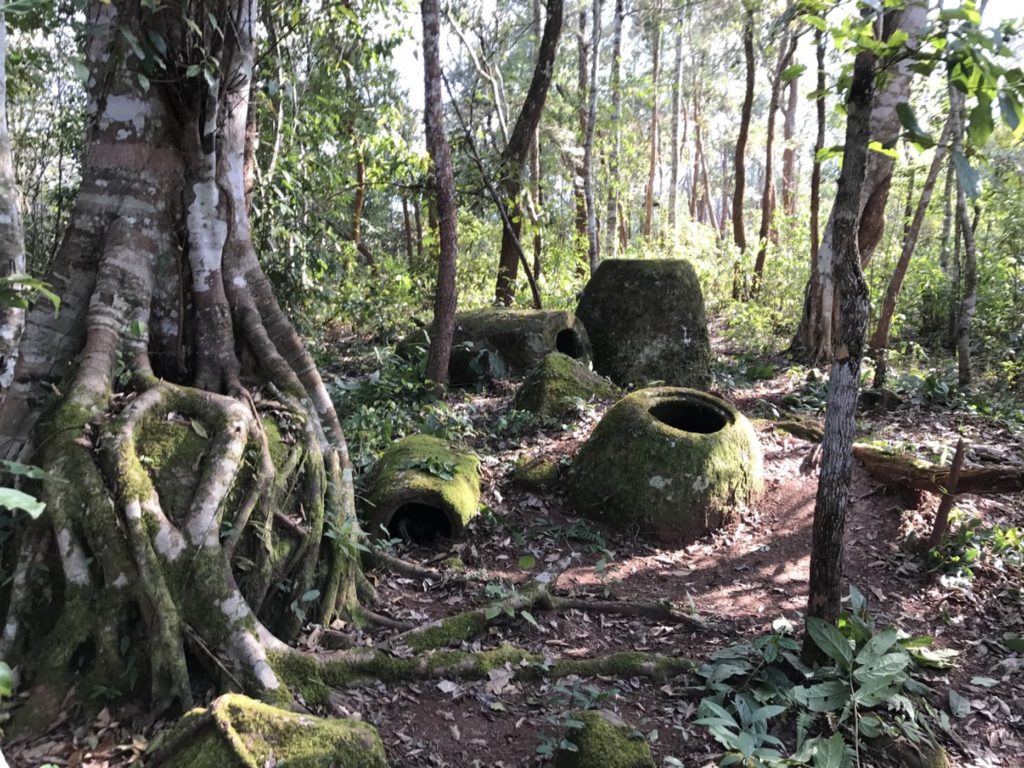
Although the region is best known for the stone jars on the Plain of Jars, most of the ancient jar sites are in heavily forested and mountainous areas.
Credit: Plain of Jars Archaeological Project
The latest expedition, in addition to accurately mapping many of the reported sites in the Xiangkhouang region, found 15 new jar sites, containing a total of 137 ancient stone jars.
Shewan said that the newly discovered jars were similar to those found on the Plain of Jars, but some varied in the types of stone that they were made from, their shapes and the way the rims of the jars were formed.
Burial rituals
Local legends include a story that the enormous stone jars were made by giants, who used the vessels to brew rice beer to celebrate a victory in war.
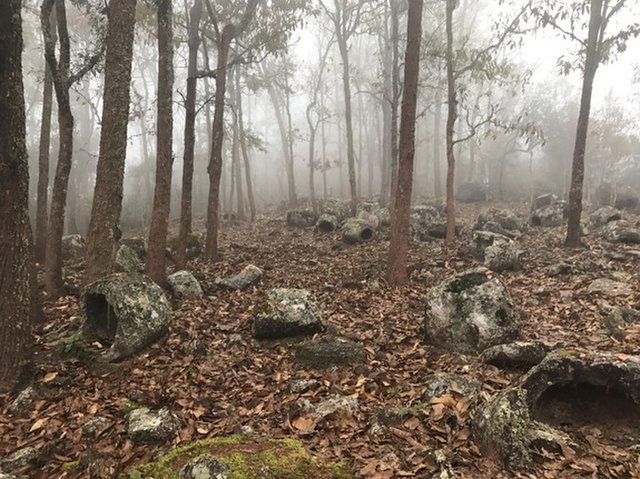
Australian and Lao archaeologists found more than 137 ancient stone jars at 15 new sites in the remote and rugged Xiangkhouang region.
Credit: Plain of Jars Archaeological Project
But archaeologists think that at least some of the carved stone jars were used to hold dead bodies for a time, before their bones would be cleaned and buried. [Top 10 Weird Ways We Deal with the Dead]
Although the remains of elaborate human burials have been found at some of the jar sites, archaeologists aren’t sure if the jars were made for the purpose of the burials or if the burials were performed later.
Excavations in 2016 revealed that some of the stone jars were surrounded by pits filled with human bones and by graves covered by large carved disks of stone. These appear to have been used to mark the grave locations.
The latest expedition also found buried disks and other artifacts. Those included several beautifully carved stone disks, decorated on one side with concentric circles, human figures and animals. Curiously, the stone discs were always buried with the carved side face down.
“Decorative carving is relatively rare at the jar sites, and we don’t know why some disks have animal imagery and others have geometric designs,” expedition co-leader Dougald O’Reilly, an archaeologist at Australian National University in Canberra, said in a statement.
The excavations around some of the stone jars also revealed decorative ceramics, glass beads, iron tools, decorative disks that were worn in the ears and spindle whorls for cloth making. Researchers also discovered several miniature clay jars that looked just like the giant stone jars and that were buried with the dead.
The scientists will now use the data and photographs from the new jar finds to reconstruct the sites in virtual reality at Monash University; then, archaeologists across the globe can use the VR to examine the sites in detail.







